A blue lobster caught off Pine Point last month grabbed headlines for being a one in 2 million find.
But the breed that appeared nearly as rare, in fact, was the person who caught it: a 14-year-old girl named Meghan LaPlante.
Females make up a small minority of Maine lobster fishermen. Just 4 percent of the state’s 5,171 commercial lobster licenses are held by women, a number that has remained steady for about a decade, according to the Maine Department of Marine Resources. But the license numbers do not include female sternmen, nor do they include women on the waiting list for licenses.
And female fishermen say the numbers don’t reflect the growth they’ve witnessed.
“I’ve seen a tremendous increase in the number of women on the water,” said Genevieve Kurilec McDonald, a Stonington-based lobsterman and member of Maine’s Lobster Advisory Council. Appointed in June, she is the first female to sit on the board.
“I think it’s great. It’s not just a man’s world anymore.”
McDonald grew up sailing, and as a kid wanted to be a marine biologist. About 10 years ago, a friend of the family needed a sternman, “so I jumped on board and never looked back,” she said. She got her commercial fishing license four years ago, and recently bought her second boat, Hello Darlin’ II. “I love being on the water. I feel good at the end of the day.”
Tired of ill-fitting fishing jackets and pants made for men, McDonald reached out last year to other female commercial fishermen in the hopes of making a case for a line of women’s gear. She launched a Chix Who Fish group on Facebook, and received more than 500 photos of female commercial fishermen from all over the world.
At the same time, Grundens USA, one of the world’s major manufacturers of waterproof bib pants, jackets and other commercial fishing wear, had taken notice. Mat Jackson, managing director of the Poulsbo, Washington-based company, said Grundens is developing gear for women for the first time.
“In commercial and sports fishing, the number of female participants seems to be growing quite rapidly,” Jackson said. “We have people calling all the time to ask for those products. We really want to address that and try to find the right products to meet those needs.”
One of Maine’s most famous female fishermen, Linda Greenlaw, said she’s definitely seen more women in commercial fishing than when she started in 1979. She’s often approached by young women asking for guidance about working on the water.
“My advice is always the same,” said Greenlaw, who has written eight books and was featured in the 1997 book “The Perfect Storm,” which was later made into a film.
She tells them “try it. It’s not for everyone. But if you find that you love it, that’s the only good reason to endure a life at sea.”
A CHANGING ROLE
To be sure, women have always been an integral part of commercial fishing, even if they haven’t been captains of their own boats.
In fact, women now stand at the helm of major organizations that represent the industry. The Maine Lobstermen’s Association, the Downeast Lobstermen’s Association, the Maine Lobster Dealers’ Association and the Maine Lobster Marketing Collaborative all are, or have been, led by women in recent years.
And historically, wives, mothers, sisters and aunts have traditionally kept the books for their family’s fishing businesses, painted buoys, netted bait and maintained gear, said Monique Coombs, author of “Lobsters on the Fly,” a 2008 cookbook that benefited the Maine Lobstermen’s Association.
In the days before lobster processing was federally regulated, women worked in a cottage industry, picking the shells for meat and making it into stews, she added. “Once the FDA stepped in,women started going out and fishing themselves, and taking on different leadership roles,” said Coombs of Orrs Island, who now works as wholesale accounts manager at Hancock Gourmet Lobster Co. in Topsham.
Groups like the nonprofit Island Fishermen’s Wives Association have also played a critical role.
The group was formed to raise money to create a memorial for two lobstermen from Stonington who drowned. Since then, its mission has evolved to help ensure fishermen have the assistance and education they need to keep themselves, their families and crews safe. It sponsors classes in CPR and first aid, hosts fundraisers for ambulance services and fire departments, holds a Fishermen’s Day festival each spring and is there to help whenever someone dies or is injured while fishing.
“We try to be here to help our fishery and our community,” said Vickie Hardie, co-president of the organization. Her husband is a fourth-generation lobsterman; her son is the fifth.
Female lobstermen say they’re hard-pressed to think of any barriers to entry for women, beyond just history and tradition.
“I didn’t face any real obstacles other than others’ perception of what a commercial fisherman should be,” said Greenlaw. “The things that challenge fishermen – severe weather, poor fishing, mechanical problems, etc. – are ignorant of gender, and have been no harder for me to overcome than they have been for my male contemporaries. I found something I loved to do, worked very hard and became good at it.”
McDonald added that there’s no good reason more women aren’t lobstering. Hauling traps isn’t as physically demanding as one might think, she said.
“There aren’t any obstacles to women getting into this, I think it’s just been tradition (that it’s been male-dominated),” said McDonald. “It’s the same as anything else. It doesn’t really matter what gender you are. As long as you work hard and take care of your boat and put your time in, you’ll be fine.”
BEHIND THE SEA CHANGE
So why haven’t more women fished for lobster until recently? What’s changed?
Since the 1970s, there have been efforts to encourage women into fields that were traditionally male-dominated. Progress has been more rapid in white-collar professions such as medicine and business, but slower in trades like construction, plumbing, carpentry, auto mechanics and fishing, said Jennifer Scanlon, a professor of humanities and gender studies at Bowdoin College in Brunswick. Women still hold a small minority of jobs in fields such as manufacturing, construction, automotive and mining industries, according to research from Catalyst, a New York-based nonprofit that works to expand opportunities for women and business.
“I think it shows the complexity of cultural shifts and how slow they can be to happen in some industries,” Scanlon said.
Farming has gone through a similar evolution as fishing, with a higher number of female operators than ever, Scanlon said. In 2007, women operated 14 percent of all U.S. farms, up from 5 percent in 1978, according to the U.S. Department of Agriculture.
“Now there’s not as much overt hostility, so if you’re willing to do hard physical labor, then (those fields are) wide open,” she said.
Christina Lemieux Oragano, a Cutler native and author of “How to Catch a Lobster in Down East Maine,” suggested that Greenlaw and Zoe Zanidakis (a Monhegan Island lobsterman featured in a 2000 season of the CBS TV show “Survivor”) have been positive role models, “helping make female lobster fishing more aspirational and culturally accepted,” she said.
What’s more, social media has helped female captains and those interested in the profession to create a sense of community. And the freedom and independence of the profession may be of particular interest to millennials (those born between 1980 and 2000).
“Millennials are much less interested in working for corporate America than previous generations,” said Lemieux Oragano. “Many would prefer to work for themselves or launch their own businesses. They highly value their freedom and work-life balance and have come of age at a time when entrepreneurs like (Facebook co-founder) Mark Zuckerberg are held up on a pedestal. Millennials also crave authenticity, and lobstering is seen as a very authentic way of life.”
CHARTING THEIR OWN COURSE
Many female lobstermen, particularly those who grew up in fishing families, say this was the most natural career path.
Mary Todd of Chebeague Island has been lobstering on her family’s boats since she was 12, and she returned to the water after finishing high school.
“I grew up on the ocean and have been on a boat my whole life,” she said. “It’s much more of a comfort zone for me.”
She bought her first boat when she was 28, then sold it four years later when she had twins, figuring she would have to give up lobstering forever. But as her kids got older and it became easier to make child-care arrangements, she found her way back to the water.
Four years ago, she bought her second boat and began fishing regularly again.
“During the years I wasn’t fishing, I was a wreck and felt so out of sync,” she said.
As early as the sixth grade, Paula Jean Lunt of Tenants Harbor had a small skiff and wooden lobster traps she hauled by hand. In high school, she fished summers and weekends and later fished to pay for college, or worked for other fishermen, filling bait bags or serving as a sternman. She graduated with a degree in photography, and at one point sold her boat to open a studio.
But in 2000, she returned to lobstering because she missed it so much. She’s been doing it ever since, even as she’s undergone various spinal, shoulder and knee surgeries, and raised a son.
“I wouldn’t trade it for anything,” she said.
When Lunt’s son was younger, she could get her work done early and still catch all his school or sports events.
“I could get in and enjoy his activities,” she said. She’s also an avid long-distance runner, and lobstering allows her to take off to race on weekends. “That might not be as easy if I worked in a cubicle somewhere.”
Like any job, she concedes, there is a downside. There is no paid time off for sick days or vacation to guarantee a paycheck in her absence.
“I need to work harder on the days I am at work,” she said, which may mean hauling more traps, or getting up to clean and paint buoys at 4 a.m.
LaPlante, the high school freshman from Old Orchard Beach who caught the blue lobster, has been fishing with her parents and brother since she was 8 years old, going out all summer and on weekends during the school year.
“It’s just so peaceful and so much fun being out there,” she said. “I love seeing the seals and the porpoises.”
She has a student lobstering license that allows her to set 150 traps a year. She has been selling lobsters through her business, Miss Meghan’s Lobster Catch, from her family’s home. The hardest part, in her mind, is the stench of the herring bait.
“It’s not like it’s terrible work,” said LaPlante. “But you get a pretty good workout if you’re lifting traps.”
She’s hoping to become a kindergarten teacher when she grows up.
“That way, I can have my summers off to go lobstering,” she said.
Jennifer Van Allen can be contacted at 791-6313 or at:
jvanallen@pressherald.com
Send questions/comments to the editors.


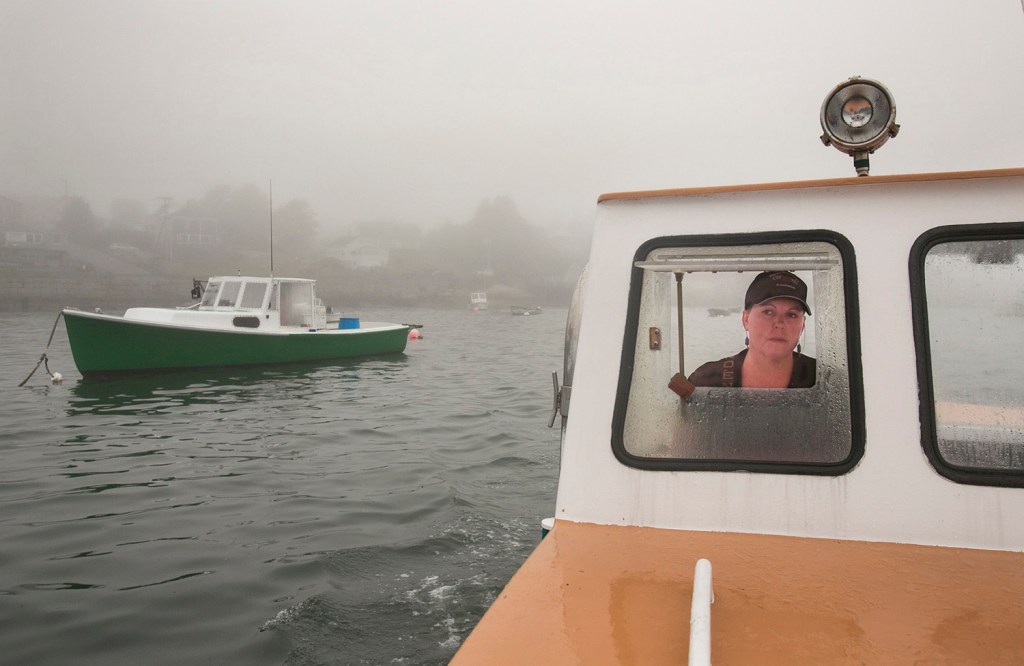
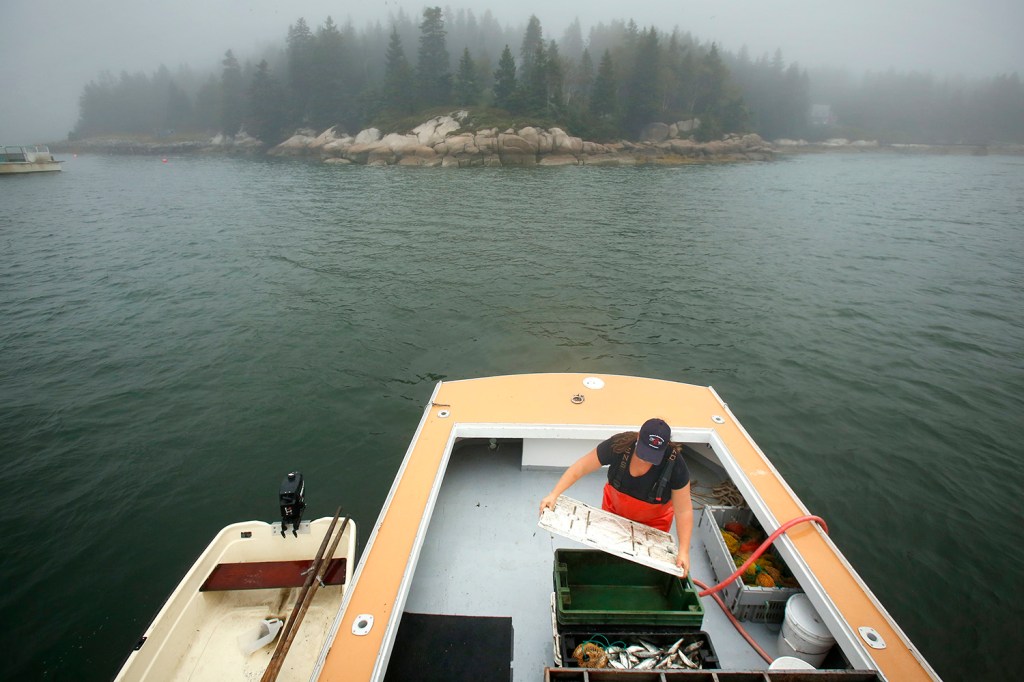
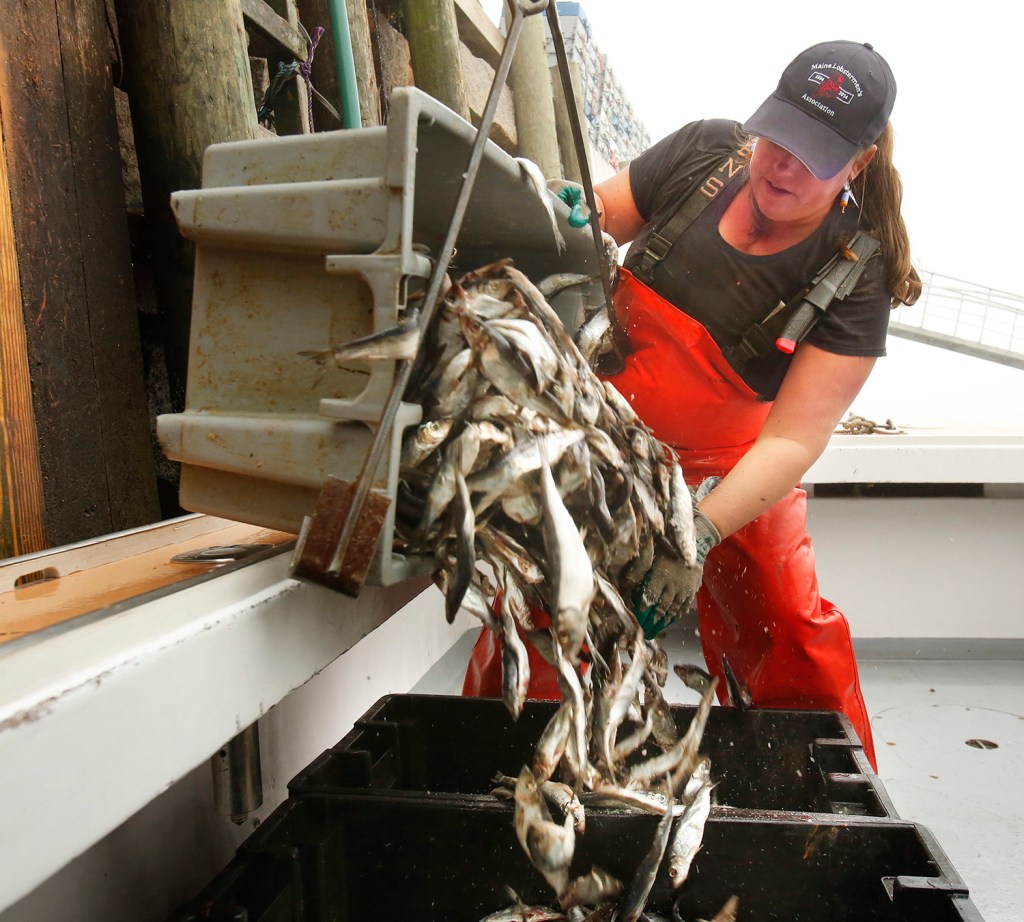
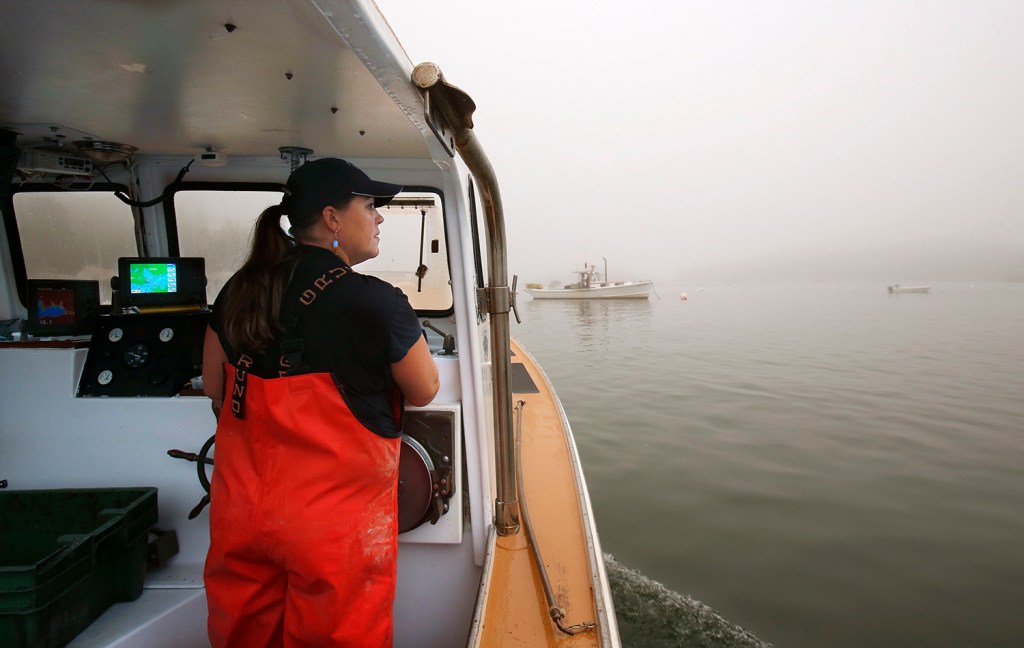
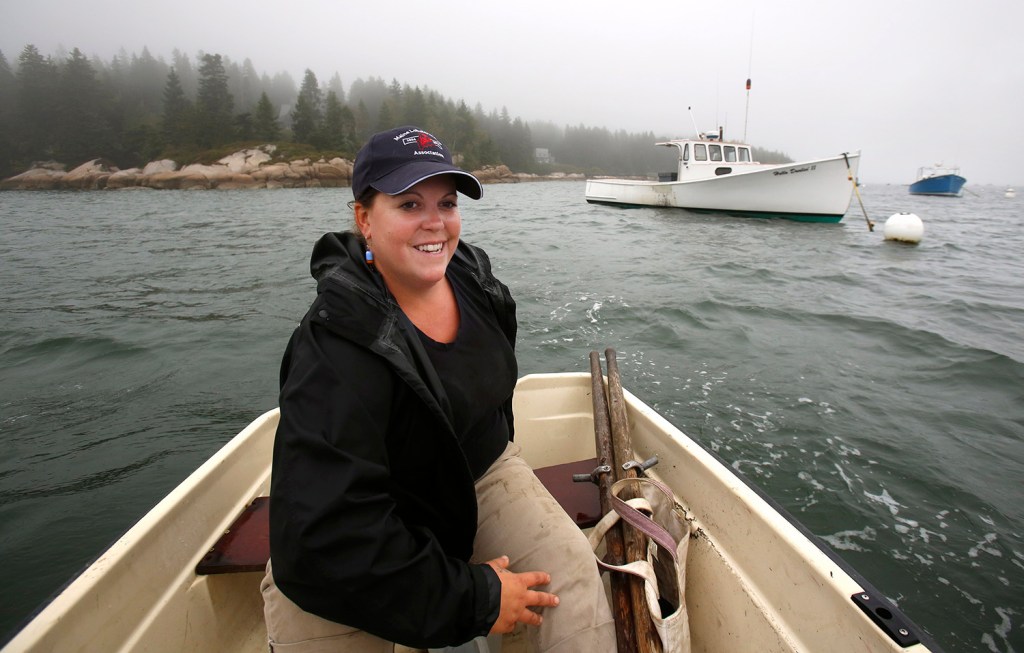

Success. Please wait for the page to reload. If the page does not reload within 5 seconds, please refresh the page.
Enter your email and password to access comments.
Hi, to comment on stories you must . This profile is in addition to your subscription and website login.
Already have a commenting profile? .
Invalid username/password.
Please check your email to confirm and complete your registration.
Only subscribers are eligible to post comments. Please subscribe or login first for digital access. Here’s why.
Use the form below to reset your password. When you've submitted your account email, we will send an email with a reset code.